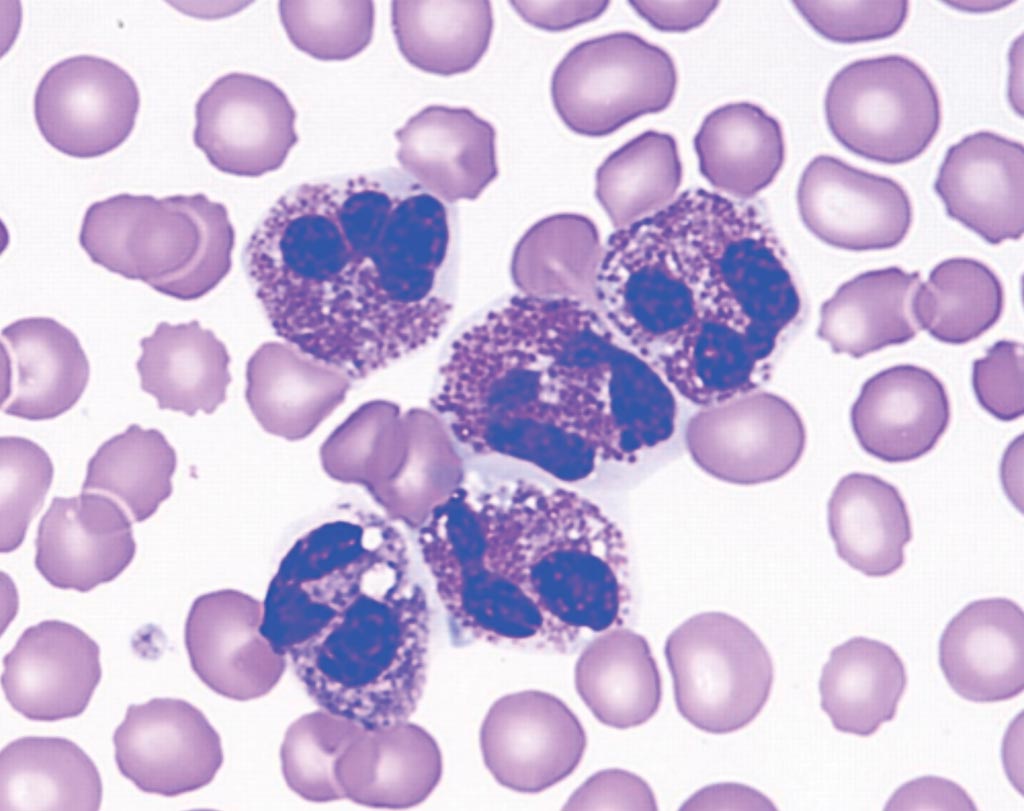Eosinophilic Biomarker Found for Aggressive IBD
By LabMedica International staff writers
Posted on 14 Dec 2017
Peripheral blood eosinophilia (PBE) in inflammatory bowel disease is associated with ulcerative colitis (UC) and active disease. Little data exist on the long-term impact of PBE on disease course.Posted on 14 Dec 2017
Inflammatory bowel disease (IBD) is a term mainly used to describe two conditions: ulcerative colitis and Crohn's disease. Ulcerative colitis and Crohn's disease are long-term conditions that involve inflammation of the gut. Ulcerative colitis only affects the colon or large intestine.

Image: Peripheral bloods smear showing five eosinophils, from a patient with eosinophilia (Photo courtesy of the Hospital for Sick Children, Toronto).
A large group of medical scientists working with the University of Pittsburgh Medical Center (Pittsburgh, PN, USA) performed a registry analysis of a consented, prospective, natural history IBD cohort at a tertiary center from 2009 to 2014. Demographics, comorbidities, disease activity, healthcare utilization, and time to hospitalization or surgical resection of patients who displayed PBE were compared to patients without PBE.
The team reported that of the 2,066 IBD patients, 19.2% developed PBE. PBE was significantly associated with UC, extensive colitis, and shorter disease duration. Over six years, PBE patients had more active disease, concurrent C-reactive protein elevation, healthcare utilization (hospitalization and IBD surgery), and more aggressive medical therapy (prednisone and anti- tumor necrosis factor). Patients with PBE had a significantly reduced time to hospitalization in both UC and Crohn’s disease (CD) and reduced time to colectomy in UC. PBE remained significantly associated with hospitalization and surgery in both CD and UC. New diagnosis of UC with PBE was associated with increased steroid and anti- tumor necrosis factor requirement.
The authors concluded that the multi-year study of a large IBD cohort suggests that peripheral blood eosinophilia represents a biomarker of a distinct IBD subgroup, with a unique inflammatory signature, and at risk for worse clinical outcomes. The study was published on November 7, 2017, in The American Journal of Gastroenterology.
Related Links:
University of Pittsburgh Medical Center




 assay.jpg)








